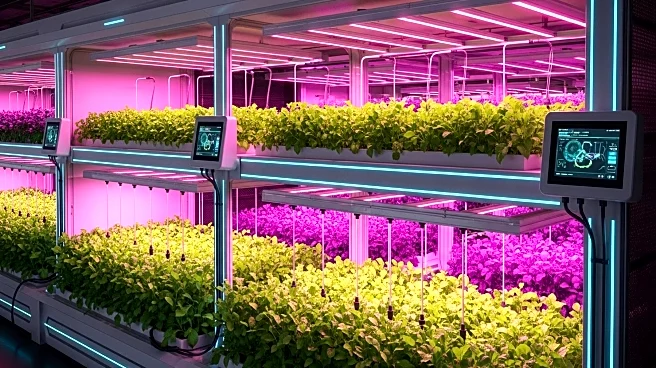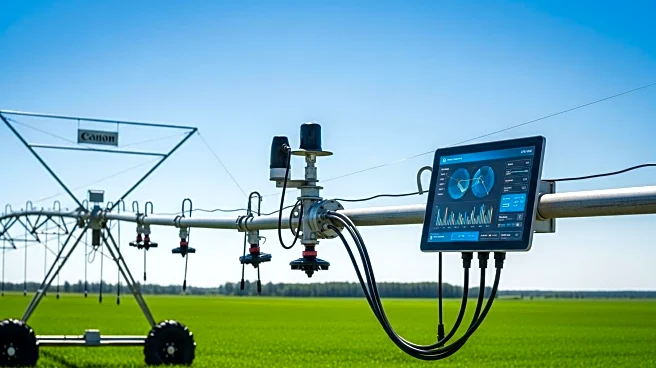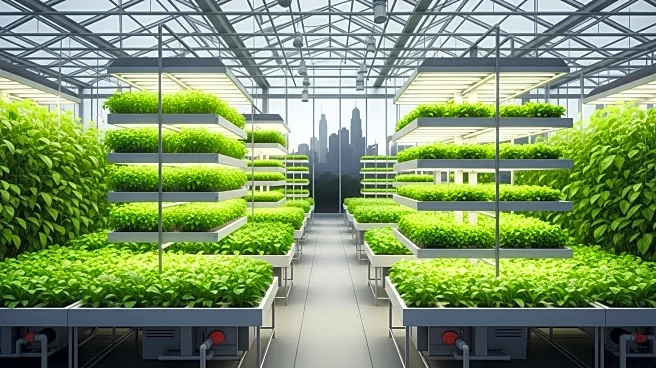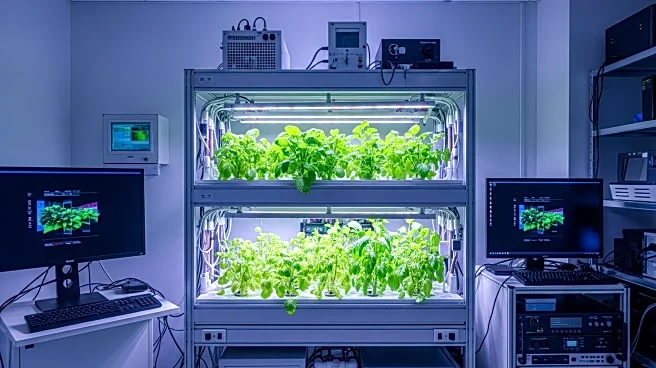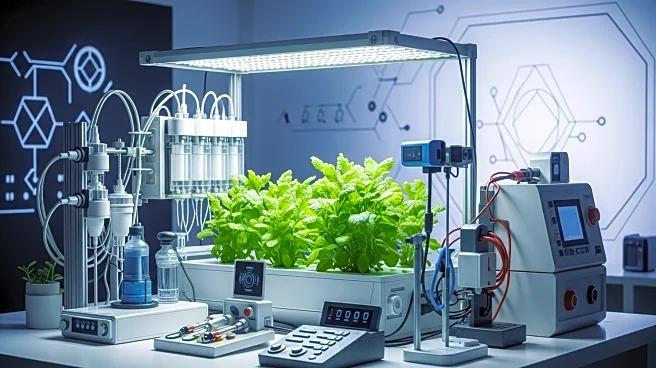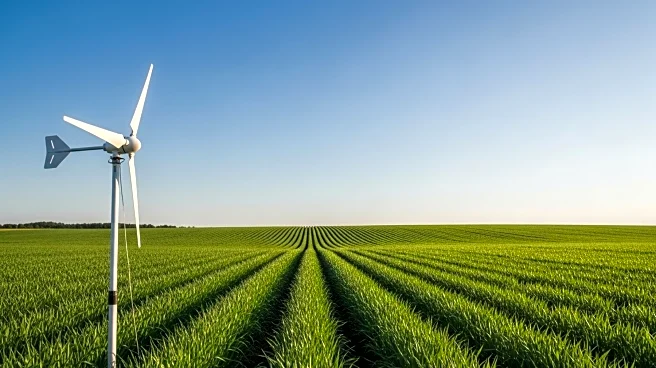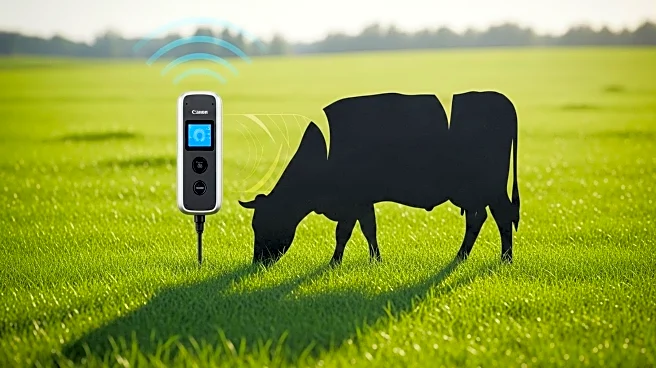What's Happening?
The vertical farming market is experiencing significant growth, with projections indicating it will reach USD 26.5 billion by 2030. This growth is driven by a compound annual growth rate (CAGR) of 22.3% from 2024 to 2030. The market's expansion is attributed to advancements in energy-efficient LED lighting, automation in farming processes, and the integration of artificial intelligence and machine learning for precise environmental control. These technologies enhance crop yields and resource utilization, making vertical farming a sustainable solution for urban food production. Despite the promising growth, challenges such as high capital requirements for infrastructure and technology, as well as energy consumption, remain significant hurdles.
Why It's Important?
The rapid growth of the vertical farming market is crucial for addressing global food security and sustainability challenges. As urbanization increases, the demand for locally-sourced, fresh produce rises, making vertical farming an attractive solution. The technology reduces water usage by up to 90% compared to traditional farming and eliminates the need for pesticides, aligning with global sustainability goals. The market's expansion also presents opportunities for technological innovation and economic growth, particularly in urban centers. Companies leading this innovation, such as AeroFarms and Illumitex, are at the forefront of creating efficient urban agricultural practices.
What's Next?
The vertical farming industry is expected to continue its growth trajectory, with Europe currently leading the market due to strong government support and sustainability initiatives. As more countries adopt vertical farming, collaborations between research institutions and industry players are likely to increase, driving further technological advancements. The focus will be on overcoming existing challenges, such as reducing operational costs and scaling up production. Continued investment in research and development will be essential to maintain the momentum and address logistical hurdles.
Beyond the Headlines
Vertical farming not only addresses immediate food production needs but also represents a shift towards more sustainable agricultural practices. The industry's growth could lead to long-term changes in how food is produced and consumed, particularly in urban areas. As technology continues to evolve, vertical farming may become a standard component of urban planning and development, contributing to the creation of smart cities and reducing the environmental impact of food production.
